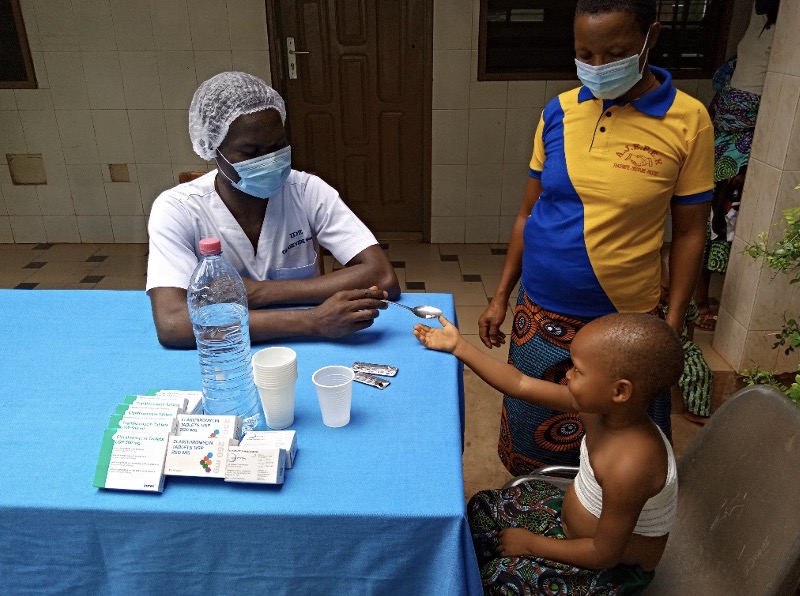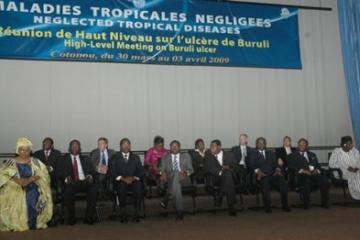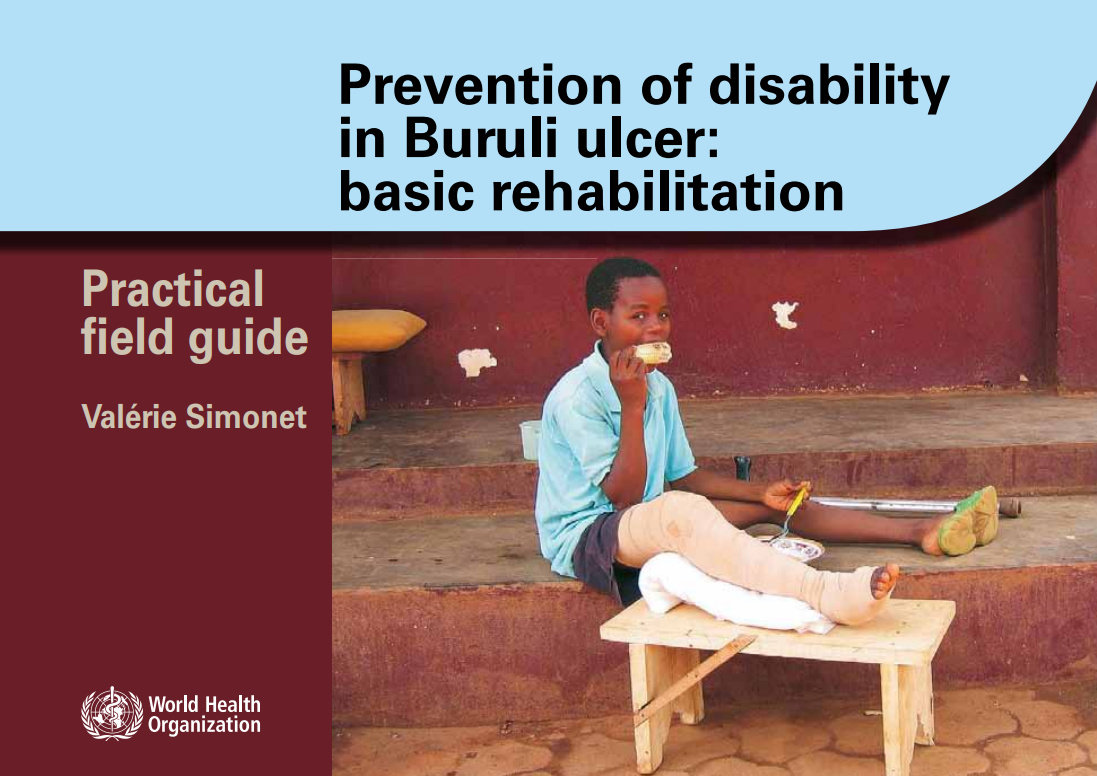Factsheet
Key Facts
- Buruli ulcer is the third most common mycobacterial disease affecting humans, after leprosy and tuberculosis.
- The mode of transmission is not clear but somehow the bacteria get into the skin and start to grow and there is no prevention for the disease.
- In the African region, 13 out of the 47 member states are known to be endemic.
- Nearly half of the people affected in Africa are children under the age of 15 years.
- Integrated early detection and antibiotic treatment are the cornerstones of the control strategy.
Sources:
Data are from WHO : The Global Health Observatory and integrated African Health Observatory.
Photography: @WHO/Harandane Dicko | @WHO/Valerie Fernandezi, @WHO/Dr Yves Thierry Barogui.
Check out our other Fact Sheets in this iAHO country health profiles series: https://aho.afro.who.int/country-profiles/af
Fact Sheet Produced by: Monde Mambimongo Wangou, Berence Relisy Ouaya Bouesso, Sokona Sy, Serge Marcial Bataliack, Humphrey Cyprian Karamagi, Lindiwe Elizabeth Makubalo., Dr Yves Thierry Barogui, Dr Dorothy Achu.
Status of endemicity of Buruli ulcer is declared in the countries have reported a case of Buruli ulcer at least once.
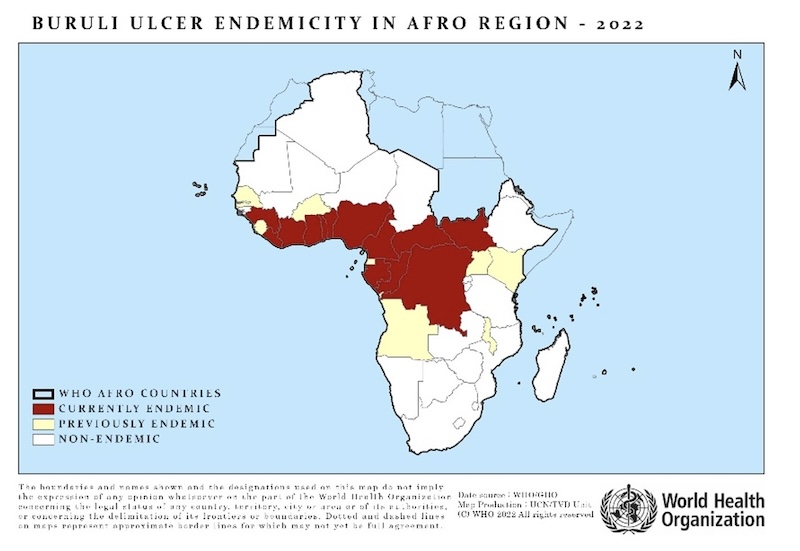
- In 2022, 13 of the 47 countries in the African Region were endemic for Buruli ulcer (see Figure 1).
- 8 countries were classified as previously endemic for Buruli ulcer in the African Region, in 2022.
- In the African Region, Buruli ulcer essentially occurs in a tropical and sub-tropical climate areas.
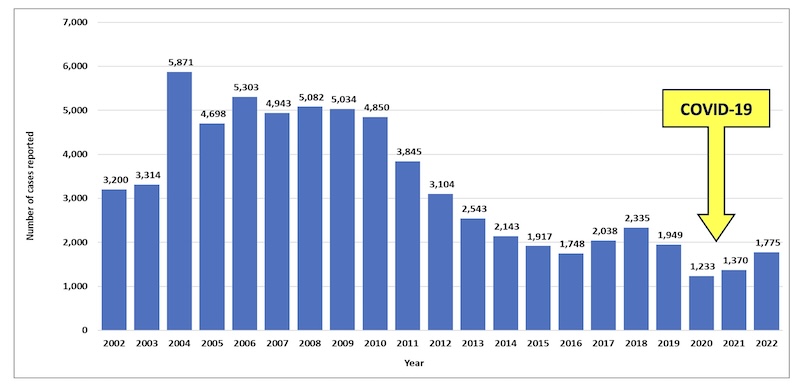
- The average annual number of Buruli ulcer cases reported in African Region was around 5,000 cases until 2010 when it started to decrease.
- The reductions seen in 2020 and 2021 could be linked to the impact of COVID-19 on active detection activities (see Figure 2).
- In 2022, 1775 cases were reported from Benin, Cameroon, Congo, Côte d’Ivoire, Democratic Republic of the Congo, Gabon, Ghana, Nigeria, and Togo (see figure 3).
- More details regarding the trend of Buruli ulcer by country can be found on The Global Health Observatory.
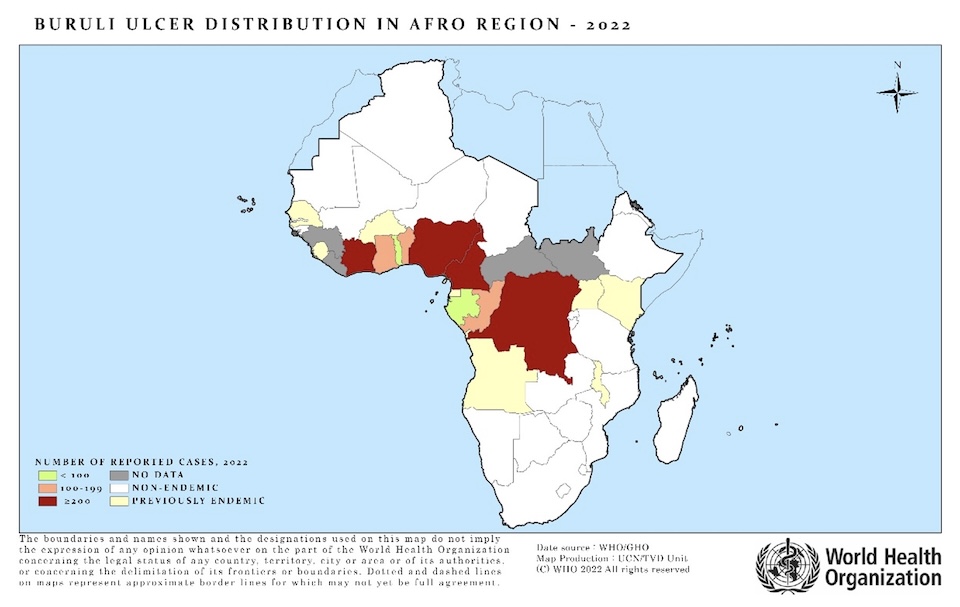
There are currently no primary preventive measures for Buruli ulcer. The mode of transmission is not known. Bacillus Calmette–Guerin (BCG) vaccination appears to provide limited protection.
The objective of Buruli ulcer control is to minimize the suffering, disabilities and socioeconomic burden. Early detection and antibiotic treatment are the cornerstones of the control strategy. In many countries, community health workers play a critical role in case detection.
These are the core indicators to measure the progress in the control of Buruli ulcer in the NTD road map 2021-2030.
- proportion of cases in category III (late stage) at diagnosis
- proportion of laboratory-confirmed cases
- proportion of confirmed cases who have completed a full course of antibiotic treatment.
WHO provides technical support, develops policies, guidelines, standard recording and reporting forms, health promotional materials, and coordinates control and research efforts. WHO brings together all major actors involved in Buruli ulcer on a regular basis to share information, coordinate disease control and research efforts, and monitor progress.
WHO provides antibiotics to endemic countries to ensure access to treatment free of charge for all patients.
WHO supports worked towards three research priorities:
- understand the mode of transmission
- develop rapid diagnostic tests
- establish best-case antibiotic treatments.
To ensure efficiency, sustainability and scale, WHO recommends that Buruli ulcer control should be integrated within skin NTDs approach adapted to the diseases present in a particular country. WHO has developed online courses and a Skin App for Androidand iOS to assist health workers in the field in the diagnosis of skin NTDs including Buruli ulcer.
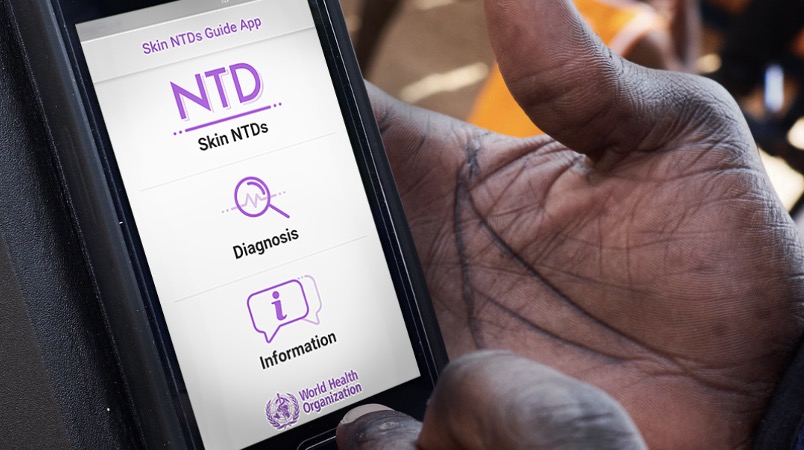
- The Yamoussoukro Declaration on Buruli ulcer
https://www.who.int/initiatives/global-buruli-ulcer-initiative-(gbui)/the-yamoussoukro-declaration-on-buruli-ulcer - Cotonou Declaration on Buruli Ulcer
https://apps.who.int/iris/bitstream/handle/10665/329410/WHO-HTM-NTD-GBUI-2009.1-eng.pdf - WHA57.1 Surveillance and control of Mycobacterium ulcerans disease (Buruli ulcer)
https://www.who.int/publications/i/item/wha57.1
Contact us at: iAHO@who.int
Connect with us on LinkedIn: https://www.linkedin.com/company/iaho/
For more information
- WHO. 2023. “Buruli ulcer (Mycobacterium ulcerans infection)”. Available at https://www.who.int/news-room/fact-sheets/detail/buruli-ulcer-(mycobacterium-ulcerans-infection)
- WHO. 2023. “Buruli ulcer (Mycobacterium ulcerans infection) fact sheet”. Available at https://www.who.int/health-topics/buruli-ulcer#tab=tab_1
- WHO. “Buruli ulcer overview”. Available at https://www.afro.who.int/health-topics/buruli-ulcer
- WHO. “Neglected tropical of diseases-Buruli ulcer”. Available at https://www.who.int/data/gho/data/themes/topics/indicator-groups/indicator-group-details/GHO/buruli-ulcer
- WHO. “Status of endemicity of Buruli ulcer”. Available at https://www.who.int/data/gho/data/indicators/indicator-details/GHO/buruli-ulcer
- WHO. “Number of new reported cases of Buruli ulcer”. Available at https://www.who.int/data/gho/data/indicators/indicator-details/GHO/number-of-new-reported-cases-of-buruli-ulcer
- WHO, 2006. “Recognizing Buruli ulcer in your community”. Available at https://apps.who.int/iris/bitstream/handle/10665/69313/WHO_CDS_NTD_GBUI_2006.14_eng.pdf?sequence=1
- A road map for neglected tropical diseases 2021–2030 ”. Available at https://www.who.int/publications/i/item/9789240010352
- “Framework for the integrated control, elimination and eradication of tropical and vector-borne diseases in the African Region 2022–2030”. Available at https://apps.who.int/iris/bitstream/handle/10665/361856/AFR-RC72-7-eng.pdf?sequence=1&isAllowed=
- “Strategic framework for integrated control and management of skin-related neglected tropical diseases”. Available at https://www.who.int/publications/i/item/9789240051423
- “Framework for development country NTD master plan 2021 - 2025 ”. Available at https://espen.afro.who.int/system/files/content/resources/NTDMasterPlan_Guidelines_WHOAfrRegion_Version3_160321.pdf
- “Laboratory diagnosis of Buruli ulcer ” . Available at https://espen.afro.who.int/system/files/content/resources/NTDMasterPlan_Guidelines_WHOAfrRegion_Version3_160321.pdf
- “Target product profile for a rapid test for diagnosis of Buruli ulcer at the primary health-care level”. Available at https://www.who.int/publications/i/item/9789240043251
- “Treatment of Mycobacterium ulcerans disease (Buruli Ulcer) ” available at https://www.who.int/publications/i/item/9789241503402
- “Standard recording and reporting using BU 01, BU 02 and BU 03 forms”. Available at https://www.who.int/teams/control-of-neglected-tropical-diseases/buruli-ulcer/objective-and-strategy-for-control-and-research#Reportingandrecordingforms
- Fourth annual meeting of the network of Buruli ulcer PCR laboratories in the WHO African Region, Mundi complex, Yaoundé, 24-26 October 2022. Available at https://www.who.int/publications/i/item/9789240077911
- Other publications ”. Available at https://www.who.int/publications/i?healthtopics=46e0b136-0538-42f3-8761-190b7013265b&publishingoffices=ef806e9e-be4b-423a-91c9-9db2a8706e74&healthtopics-hidden=true&publishingoffices-hidden=true




